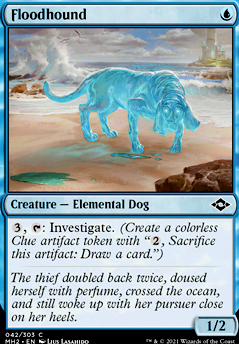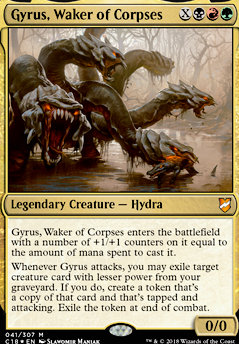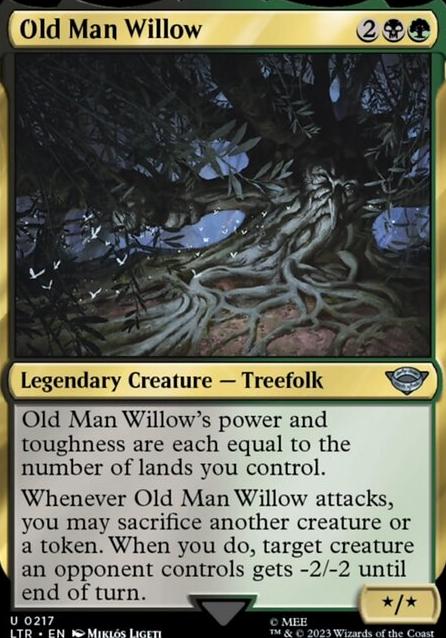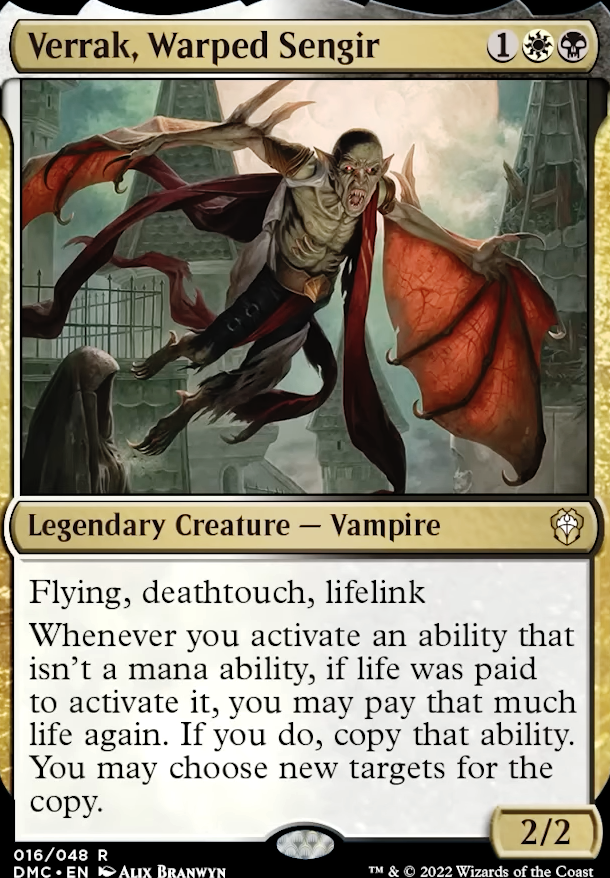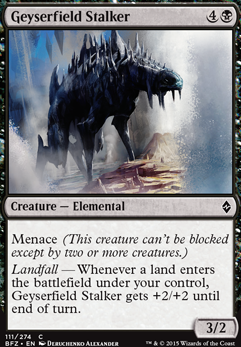
Combos Browse all Suggest
Legality
| Format | Legality |
| 1v1 Commander | Legal |
| Archenemy | Legal |
| Arena | Legal |
| Block Constructed | Legal |
| Canadian Highlander | Legal |
| Casual | Legal |
| Commander / EDH | Legal |
| Commander: Rule 0 | Legal |
| Custom | Legal |
| Duel Commander | Legal |
| Gladiator | Legal |
| Highlander | Legal |
| Historic | Legal |
| Legacy | Legal |
| Leviathan | Legal |
| Limited | Legal |
| Modern | Legal |
| Oathbreaker | Legal |
| Pauper | Legal |
| Pauper Duel Commander | Legal |
| Pauper EDH | Legal |
| Pioneer | Legal |
| Planechase | Legal |
| Quest Magic | Legal |
| Vanguard | Legal |
| Vintage | Legal |
Geyserfield Stalker
Creature — Elemental
Mencace (This creature can't be blocked except by two or more creatures.)
Landfall — Whenever a land enters the battlefield under your control, Geyserfield Stalker gets +2/+2 until end of turn.
divinagon on
 Jund Landfall
Jund Landfall
7 years ago
This isn't an aggro deck, so I wouldn't want Scythe Leopard or Makindi Sliderunner over either of the other two. Jaddi Offshoot helps against the "Everything's a One Drop" decks, and Geyserfield Stalker isn't a terrible card in this deck. It gets +2/+2 every time a land enters, which is a lot for me, has menace, and I can give it trample in multiple ways. Also, I'm not going to run black in a deck for three cards, all of which being the same.
cmsrDPM on
 Jund Landfall
Jund Landfall
7 years ago
On Traverse the Ulvenwald I really don't see an easy way for you to get delirium. Land, creature, and even Planeswakler sure. But you don't want to lose your artifacts and the only sorcery is Transverse.
Also perhaps Scythe Leopard and Makindi Sliderunner over Jaddi Offshoot and Geyserfield Stalker.
MagicalHacker on Any holes in this new …
7 years ago
So I'm not a huge fan of the current Horde format for a few reasons:
- Not every tribe has tokens
- There's nothing stopping someone from making an unstoppable horde deck
- The horde deck can sometimes hurt itself randomly
- The flavor feels off, since in a zombie apocalypse, for example, you are not attacking a single person, but the zombies attacking you.
- Flavor fail: you get to prepare for a horde?
- All the survivors winning or losing simultaneously is both a flavor fail and a mechanics fail because sometimes team members die, so the better representation in game of what the real balance is would be separate losing.
- Ulamog, the Infinite Gyre and/or Kozilek, Butcher of Truth would be nearly impossible to defeat in an eldrazi horde deck, because to win, you have to get the horde to an empty library, but when you damage the life total, it mills that many cards, which could get one of these guys, resetting the deck.
- Infinite mana means the horde wins when it gets anything that has a mana dump, so more cards that are unbeatable.
All in all, this current format is the textbook definition of flavor fail AND poor mechanic balance. So I present...
Horde 2.0!
Here are the rules (skip over the parentheses for basic rules):
Horde deck construction:
- Choose a creature subtype and a plane. The deck is constructed of one of each of all creatures with that subtype printed in a set on that plane and one of each other card that produces a token with that subtype printed in a set on that plane.
Gameplay rules:
- The players win when the horde has zero cards on the battlefield, in their hand, and in their library.
- At the beginning of the game, the horde puts cards from the bottom of its library into its sideboard until it has a number of cards in its library equal to 20 times the number of other players.
- The horde always goes first, but it does not draw cards. Instead, it plays with the top card of its library revealed and can cast that card.
- These additional actions happen each upkeep: 1. If it is the horde's turn, it adds mana equal to the turn number multiplied by the number of opponents. 2. Flip a coin for each activated ability they can activate in order of what creatures have entered the battlefield, and for each heads, the horde activates that ability and flips again for that ability if it can still be activated. (Noncreatures must activate an ability if able.) 3. The horde casts cards from their deck. (Once a spell that can counter another spell can be cast, mana is taken out of the pool for that spell, it is put into the hordes hand, and whenever an opponent casts a legal target for the counterspell, the horde flips a coin and casts the counterspell if they get a heads; creatures with alternate ways to cast them are randomly chosen which way to be cast.)
- The horde has no life total, so whenever an effect would check its life total, it checks the number of cards left in its library instead.
- If the horde would be dealt damage or lose life, put a card from the top of the library of the horde deck into the sideboard. If it would gain life, put a cards from the bottom of the sideboard to the bottom of the library.
- All creatures the horde controls attack each turn if able, starting with the newest creature. (Any player may block these creatures. The horde attacks the player with the highest total Cmc among permanents they control.)
- The players' life total is the total of their starting life totals combined. Whenever the players have lost an amount of life equal to what would be one player's starting life total, the player with the smallest total Cmc among permanents they control loses the game. (Lifegain cannot bring them back. This continues for each increment of "starting life totals". If that player cannot lose, the next player with the lowest total of Cmc among permanents they control loses instead.)
- If the horde has to make any choices, this is how it chooses: Firstly, it wants to make positive effects for itself. For this, it wants to choose the highest cmc card, then the oldest cmc card. Secondly, it wants to make negative effects for opponents. For this, it wants to choose the highest Cmc card, then from the player with the highest Cmc total among his or her permanents, then the newest card. Thirdly, the horde can make choices when it comes to positive effects for opponents or negative effects for itself. For positive effects for opponents, it wants to choose the lowest Cmc card, then choose from the opponent with the lowest cmc total among permanents they control, then the newest card. For negative effects for itself, it wants to choose the lowest cmc card, then the newest cmc card. Lastly, for all other choices, it will make a choice at random (coin flips used for the horde deciding whether or not to do a particular action, such as a may effect; if the horde has to pick the value of X, it is randomized with a d10).
Also, here's a sample decklist:
Horde 2.0: Zendikar Eldrazi
Unknown
SCORE: 2 | 36 VIEWS
So here are my questions:
- Is it descriptive enough to play a game without a question about rules every other turn?
- Is there anything I can do to make it simpler while keeping the flavor and mechanics nearly identical?
- Are the any cards that would break the spirit of the format that I should be aware of so that I can adjust the rules appropriately?
Thank you guys!
chirz2792 on
 Green/Black Destruction Deck
Green/Black Destruction Deck
8 years ago
Cards I would suggest to add in for right now would be Foul Orchard, Temple of Malady, 4 forests, 3 swamps, Arcane Lighthouse, Butcher of Malakir, Dictate of Erebos, Sakura-Tribe Elder, Elvish Mystic, Burnished Hart, Brood Monitor, Terastodon, Murder, and Krosan Grip. Cards I would suggest taking out for those are Tasigur, the Golden Fang, Warden of the First Tree, Broodhunter Wurm, Canopy Gorger, Geyserfield Stalker, Giant Mantis, Herald of the Pantheon, Reaver Drone, Saddleback Lagac, Shambling Attendants, Tajuru Pathwarden, Woodland Wanderer, Zulaport Chainmage, Hedron Crawler, Elemental Uprising, Lead by Example, Gladehart Cavalry, Swell of Growth, and Jaddi Offshoot. I know that's a long list of cuts and adds but you have a lot of cards in here hat aren't relevant to what this deck is trying to do so I would suggest cutting those first :). Also wondering what's your budget like? Because there are a few cards I want to suggest but I'm not sure if they're too expensive or not so let me know about that and what you think about my suggestions.
| Have (1) | ajmcnulty |
| Want (0) |

